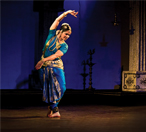 Seven forms. Innumerable mudras and bhavas. A taal and you’re set. That’s the charm of Indian classical dance, finds a youth inc correspondent.
Seven forms. Innumerable mudras and bhavas. A taal and you’re set. That’s the charm of Indian classical dance, finds a youth inc correspondent.
The sensuous movements of the dancer have the crowd completely engaged in the story that she is telling. One moment she is a desiring lover, and another a nurturing mother. And all she has at her disposal to convey her emotions are her movements and expressions, that she has to set perfectly to the live beats of the table. Her ghunghroos have another story to tell. It is a form of communication that has the ability to bring out the innermost feelings of a person, and with classical dance, these feelings are brought out in the context of culture as well. Of course, like everything associated with our culture, classical dance too had to gain international acclaim before becoming widely popular in India.
“Movements in the Indian classical dances often combine the mind, body and soul, since they have evolved from age old traditions. There are varied forms, each with its own nuances and details, and anyone who wants to be an exponent must understand the various dance forms before deciding to adopt one,” says Dr Bharti Gupta, who is a Kathak exponent, and has researched the dance form extensive for her PhD and teaches in Mumbai.
India has witnessed the birth to myriad forms of dancing, each shaped by the influences of a particular historical period. Extremely intricate and an art that requires skill, hard work and discipline, dance portrays some expression of life. In fact almost every dance movement, expression and posture has a specific meaning. And the traditional themes are either influenced or derived from mythology, folklore, legends and classical literature.
“Indian dance is said to have originated from Natya Shastra, which is a detailed script written on all aspects of Indian dance. The author of Natya Shastra was Bharata Muni who wrote it somewhere in the second century BC,” informs Dr Gupta.
Adds Bharat Natyam exponent and choreographer Snehal Mehta, “There are two main forms, in India are the classical and folk forms. What is interesting to note, and very unique to India is that the dances are devotional in content. Not because I practice it, but, Bharat Natyam is believed to be the oldest form.” She further explains that there are forms of dance that are typical to certain parts of the country, and are based on ancient disciplines.
THE STARTING POINT
According to many practitioners and teachers, like for any sport, training for dance too should start as early as age of six or less. Of course, this could be way before the official professional training. This kind of a start can enable students to grasp subtle nuances early on in life, and enable the bodies to adopt postures of the dance much more easily than older students. Of course, there is no age bar to start learning how to dance, but this belief is held by exponents who themselves have devoted a majority of their living years to the dance form.
WHAT IT TAKES
Besides an in born talent, the basic requirement for a full time professional training is matriculation or 10 + 2, for those who want to pursue their graduation in the subject. Course areas include history and evolution of dance and dance forms, the characteristic features of the dance form one specialises in, covering all aspects of dance as a performing art.
Of course it takes talent, versatility, sense of rhythm, grace, expressive facial and body language, an ability to interpret roles, attractive appearance, stage presence, creativity, physical stamina etc.
However, those who want to become serious exponents must undertand the nature of dedication and commitment required. “An entire lifetime is not is often not sufficient to grasp everything the guru has to offer, but one needs to be a life-long learner in the true sense,” says Dr Gupta.
In fact, the late Protima Bedi establsihed Nityagram near Bangalore with the philosophy that dance is a way of life, a matter of faith and belief, nurtured and enriched by the souls of its own people.
The various classical dance forms and their state of origin
• Katha Kali : Kerela
• Mohini Attam : Kerela
• Bharat Natyam : Tamil Nadu
• Kuchipudi : Andhra Pradesh
• Odissi : Orissa
• Kathak : Uttar Pradesh
• Manipuri : Manipur
Volume 1 Issue 5



























